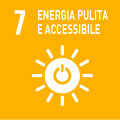- Docente: Stefano Stagni
- Crediti formativi: 5
- SSD: CHIM/03
- Lingua di insegnamento: Inglese
- Modalità didattica: Convenzionale - Lezioni in presenza
- Campus: Bologna
- Corso: Laurea Magistrale in Advanced Spectroscopy in Chemistry (cod. 5706)
-
dal 24/02/2025 al 30/05/2025
Conoscenze e abilità da conseguire
Students acquire a basic knowledge of Coordination Chemistry and are familiar with common theories concerning metal ligand bond, the synthesis and properties of coordination compounds, including most simple organometallic compounds. At the end of the course, students are able to relate the nature of the different metal-ligand combinations with the properties of the complexes and their possible use in different application fields including: catalysis, functional materials, bioinorganic and supramolecular chemistry
Contenuti
I. The inorganic elements in the periodic table (6h)
Non-metals, metalloids and metals in the periodic table: electron configuration, characteristics, bonding, reactivity.
II. Coordination complexes and the metal-ligand bonding (8h)
a) General aspects. Metal ions: electron configuration, the d sub-shell in transition metals, the f sub-shell in lanthanides. Ligands: definition, the Lewis acid/base model. Multidentate ligands and chelates. Geometry. Nomenclature.
b) The metal-ligand bonding. The molecular orbital model: octahedral and tetrahedral complexes. Sigma/pi-donor, pi-acceptor ligands. Link with the crystal field theory: high spin/low spin complexes.
III. Spectroscopic investigation of transition metal complexes (12h)
a) UV-visible spectroscopy: spectral terms, Orgel diagrams, Tanabe-Sugano diagrams, intervalence charge transfer.
b) Mid-infrared and near infrared spectroscopies: application to carbonyl and cyano complexes, and to organic ligands.
c) Emission spectroscopy: basics, the Jablonski diagram, definition of quantum yield and emission lifetime. Luminescence from organic compounds and heavy-metal complexes and lanthanides.
IV. Reactivity of metal complexes: (18h)
a) Contributions to the stabilization energy of complexes: electrostatic interaction, crystal field stabilization energy, the HSAB model. Influence of the size and charge of the metal ion. S-p metals vs. transition metals : comparison.
b) Ligands substitution: inert/labile complexes, link with the crystal field theory, the trans effect.
c) Reactivity in organometallic chemistry: the 18-electron rule, oxidative addition, reductive elimination. Application to homogeneous catalysis
d) Excited states as new chemical species: different energy, lifetime, geometry, dipole moment. The case of [Ru(bpy)3]2+.Application to artificial photosynthesis and solar light harvesting
e).Luminescent metal complexes and lanthanide-based compounds: fundamentals and application to materials (light emitting devices) and life science (bioimaging and biosensing).
f) Photocatalytic processes mediated by transition metal complexes.Testi/Bibliografia
Inorganic Spectroscopic Methods (Oxford Chemistry Primers), Alan K. Brisdon;
Structural Methods in Inorganic Chemistry, Second Edition, E.A.V. Ebsworth, David W. H. Rankin , Stephen Cradock
Housecroft & Sharpe, Inorganic Chemistry, fifth edition. Ed- Pearson.
Metodi didattici
Lectures (presence and on line), possibly integrated with practical tutorials.
Modalità di verifica e valutazione dell'apprendimento
The exam consists of a written test focussed on the course's topics, possibly followed (at students' request) to the discussion of one research paper in the case of the need to improve the mark obtained from the written text. Registration to the written exams is required through “Alma Esami” web platform, in observation to the stated deadlines.
Strumenti a supporto della didattica
Blackboard and video projector, on line lectures by Teams platform.
Orario di ricevimento
Consulta il sito web di Stefano Stagni
SDGs




L'insegnamento contribuisce al perseguimento degli Obiettivi di Sviluppo Sostenibile dell'Agenda 2030 dell'ONU.
